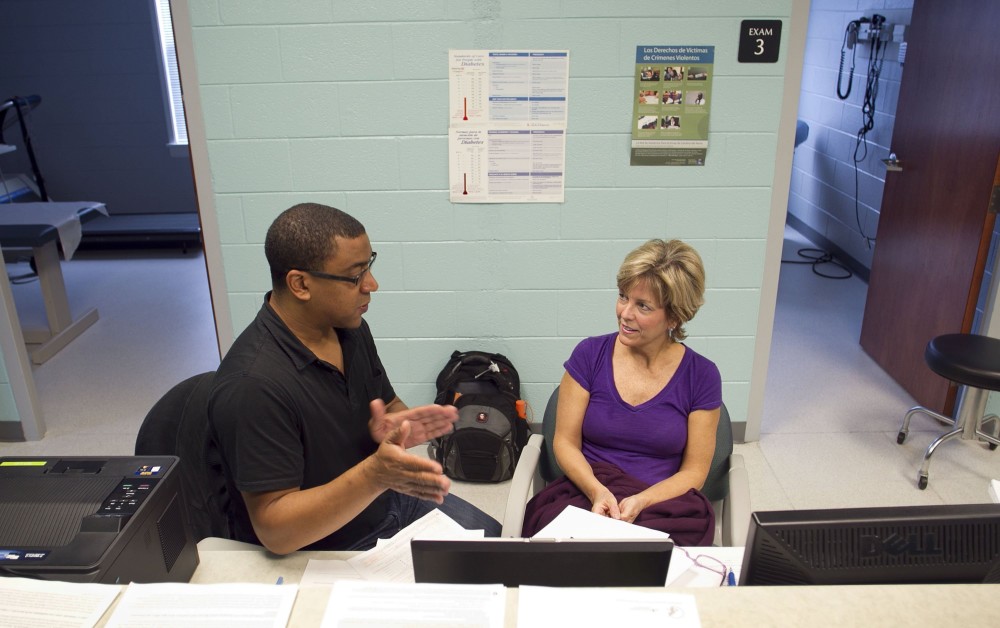By Randy Tucker
Dayton Daily News, Ohio.
Since the early days of the Affordable Care Act, insurers and others have worried that a disproportionate number of older, sicker Americans enrolling in the health insurance marketplaces would push up premiums for everyone to cover higher-than-expected medical costs.
Now that Americans are signing up for coverage, another cost threat has emerged: too many women.
Women comprised 55 percent of the 3.3 million Americans who signed up for coverage in state and federal marketplaces through Feb. 1, according to government figures released last week.
In Ohio, 56 percent of the 60,000 residents who enrolled in private health plans through the state marketplace were women.
Most female enrollees selected higher-value health plans that require insurers to cover a greater share of their medical costs after their deductibles are met. At least 66 percent of women in the marketplaces have selected “silver” plans, which require insurers to cover at least 70 percent of medical costs.
And women tend to use significantly more services and spend more health care dollars than men, said Kevin Coleman, head of research and data at HealthPocket.com, a health insurance cost-comparison website.
“In almost every age bracket, women have higher medical use, on average, than men. So, all things being equal, if you have significantly greater representation by women, then, yes, you could have higher health care costs and higher premiums in the marketplaces,” Coleman said.
An analysis of the government’s 2003 Medical Expenditure Panel Survey — which tracks health care costs among more than 50,000 U.S. adults — found that median annual health care spending among non-elderly adult women was $1,844, or more than double the figure for men, $847.
Maternity care
The biggest cost driver for women was maternity care, which accounted for 16 percent of overall health plan costs in the annual survey conducted by the U. S. Census Bureau for the U.S. Department of Health and Human Services.
With the cost of an uncomplicated pregnancy ranging anywhere from $6,000 to $10,000, including labor and delivery, women of child-bearing age have a built-in incentive to sign up for health insurance to reduce the amount they’ll have to pony up themselves, said Lucy Grosz, co-founder of Alta Vista Benefits in Columbus and president of the Ohio Association of Health Underwriters.
“In many cases, when they do get pregnant, I think women innately know that it’s really going to be up to them to take care of themselves and that child because the man isn’t always around,” Grosz said.
It’s not just women in their 20s and 30s seeking health insurance primarily for maternity care, Grosz said, noting the trend among many women to delay childbirth until their late 30s and early 40s — expanding the window in which insurers might be required to cover maternity costs.
“We’ve grown up into a society where women are a lot more independent now, and they decide to have children when the time is right or them,” she said.
Another reasons many women may be flocking to the health marketplaces is the health care reform’s elimination of certain discriminatory practices in the health insurance industry.
Prior to the passage of the Affordable Care Act in 2010 women were often charged significantly higher rates than men for the same health coverage.
A 2009 report from the National Women’s Law Center found that the practice of gender-rating — or setting premium rates base on gender — allowed for a 25-year-old woman to be charged up to 84 percent more than a 25-year-old man for identical coverage in the individual market.
The ACA eliminates gender rating and requires all qualified health plans sold on the marketplaces to cover maternity care, leading U.S. Health and Human Services Secretary Kathleen Sibelius to comment: “Being a woman is no longer a pre-existing condition in the health insurance marketplace.”
Linda Landis of Columbus said she couldn’t get insurance at any cost before the ACA was enacted because of a number of pre-existing conditions she had developed over the years.
“I finally have coverage after being considered disposable by insurance companies,” said Landis, responding to a newspaper Facebook request for comment on the ACA. “I’ve been really healthy now for a lot of years, so hopefully, the insurance company won’t be spending a lot on me in the near future. But I’m glad to have it (health insurance.)”
Despite the flood of women into the marketplaces, insurers haven’t started to panic — yet. That’s because it’s too early to tell what the final mix of marketplace enrollees might be, said Scott Streator, vice president of the health insurance marketplace for Dayton-based CareSource, which sells its CareSource Just4Me brand health insurance products on the marketplace.
“CareSource Just4Me enrollment is mirroring the national data, and we are not concerned about early statistics on the number of women signed up for plans,” Streator said. “Health care reform is a marathon, not a sprint, and it will take data from several enrollment periods to understand the demographic mix.”
About 6 million Americans are expected to sign up for coverage by the March 31 deadline for initial enrollment in the marketplaces this year. But as many as 22 million Americans could enroll in the marketplaces by 2016, according to Congressional Budget Office projections.
“We are currently seeing women enrolling at a faster pace than men, but at this point, we cannot speculate as to future premium impact, if any,” said Ed Byers, a spokesman for Cleveland-based Medical Mutual.














































































































































































































































































































































































